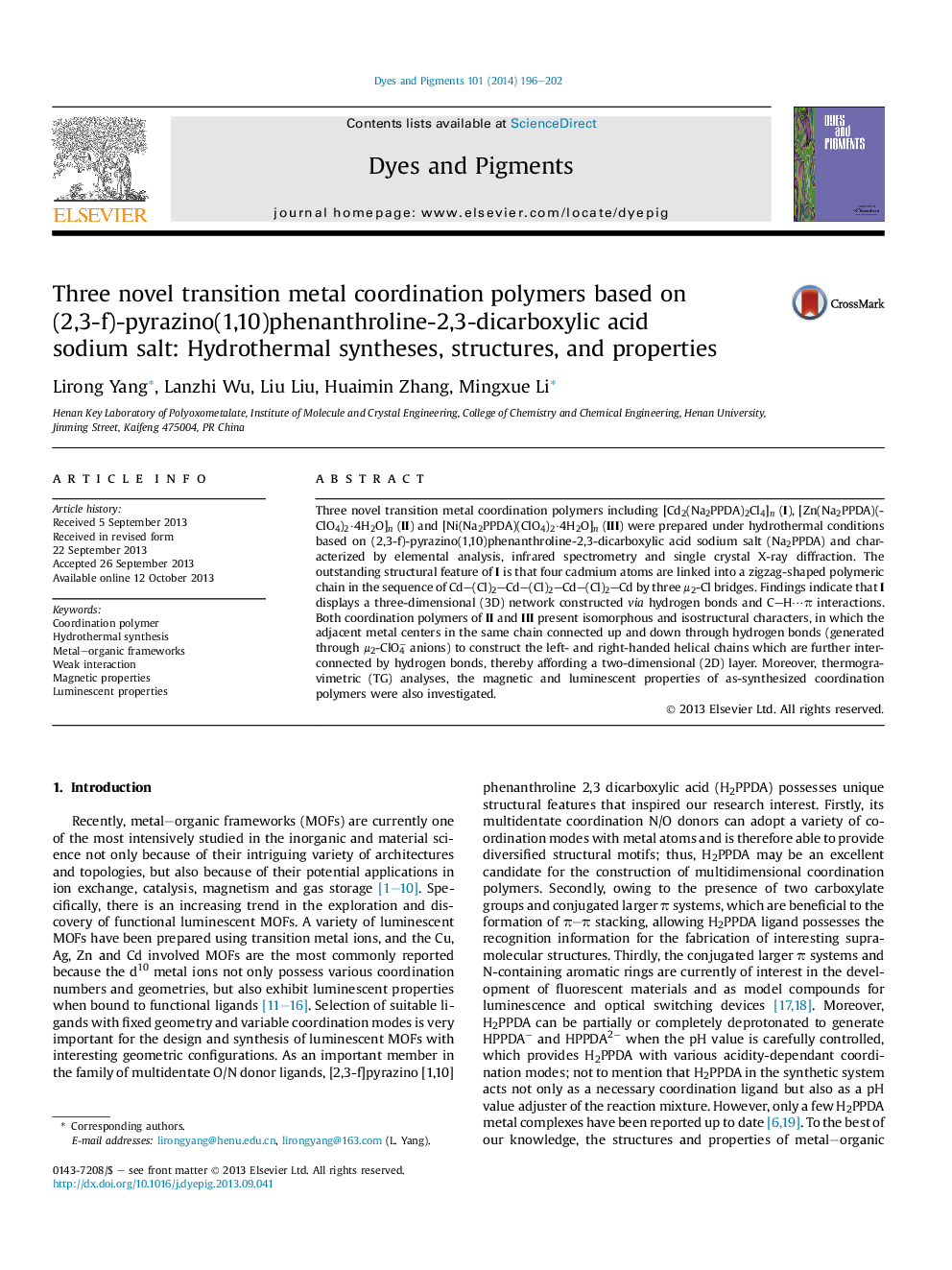| Article ID | Journal | Published Year | Pages | File Type |
|---|---|---|---|---|
| 176113 | Dyes and Pigments | 2014 | 7 Pages |
•3D network of I is constructed via μ2-Cl bridges, hydrogen bonds and C–H⋯π interactions.•2D layers of II and III are formed by the helical chains through hydrogen bonds.•Luminescencent peaks of I–III appear in the visible and near-infrared regions.•III presents antiferromagnetic property.
Three novel transition metal coordination polymers including [Cd2(Na2PPDA)2Cl4]n (I), [Zn(Na2PPDA)(ClO4)2·4H2O]n (II) and [Ni(Na2PPDA)(ClO4)2·4H2O]n (III) were prepared under hydrothermal conditions based on (2,3-f)-pyrazino(1,10)phenanthroline-2,3-dicarboxylic acid sodium salt (Na2PPDA) and characterized by elemental analysis, infrared spectrometry and single crystal X-ray diffraction. The outstanding structural feature of I is that four cadmium atoms are linked into a zigzag-shaped polymeric chain in the sequence of Cd–(Cl)2–Cd–(Cl)2–Cd–(Cl)2–Cd by three μ2-Cl bridges. Findings indicate that I displays a three-dimensional (3D) network constructed via hydrogen bonds and C–H⋯π interactions. Both coordination polymers of II and III present isomorphous and isostructural characters, in which the adjacent metal centers in the same chain connected up and down through hydrogen bonds (generated through μ2-ClO4− anions) to construct the left- and right-handed helical chains which are further interconnected by hydrogen bonds, thereby affording a two-dimensional (2D) layer. Moreover, thermogravimetric (TG) analyses, the magnetic and luminescent properties of as-synthesized coordination polymers were also investigated.
Graphical abstractFindings indicate that 1D zigzag-shaped chains based on Cd4Cl6 units are linked into 2D layers through hydrogen bonds and C–H⋯π interactions in different directions. The adjacent 2D layers extending in different directions are interconnected into 3D network through weak interactions above-mentioned in clinker-built fashion.Figure optionsDownload full-size imageDownload as PowerPoint slide
